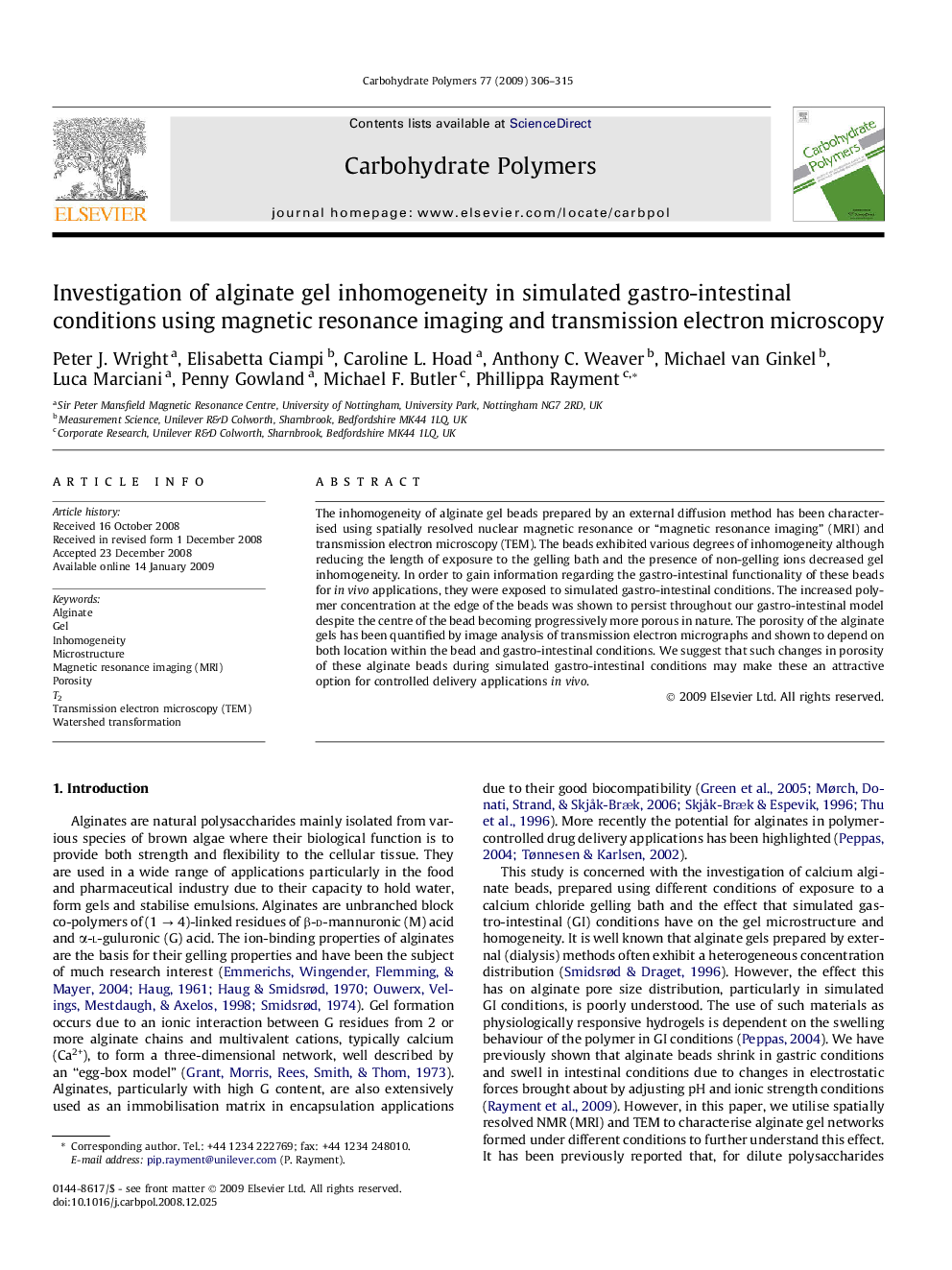| Article ID | Journal | Published Year | Pages | File Type |
|---|---|---|---|---|
| 1378815 | Carbohydrate Polymers | 2009 | 10 Pages |
Abstract
The inhomogeneity of alginate gel beads prepared by an external diffusion method has been characterised using spatially resolved nuclear magnetic resonance or “magnetic resonance imaging” (MRI) and transmission electron microscopy (TEM). The beads exhibited various degrees of inhomogeneity although reducing the length of exposure to the gelling bath and the presence of non-gelling ions decreased gel inhomogeneity. In order to gain information regarding the gastro-intestinal functionality of these beads for in vivo applications, they were exposed to simulated gastro-intestinal conditions. The increased polymer concentration at the edge of the beads was shown to persist throughout our gastro-intestinal model despite the centre of the bead becoming progressively more porous in nature. The porosity of the alginate gels has been quantified by image analysis of transmission electron micrographs and shown to depend on both location within the bead and gastro-intestinal conditions. We suggest that such changes in porosity of these alginate beads during simulated gastro-intestinal conditions may make these an attractive option for controlled delivery applications in vivo.
Keywords
Related Topics
Physical Sciences and Engineering
Chemistry
Organic Chemistry
Authors
Peter J. Wright, Elisabetta Ciampi, Caroline L. Hoad, Anthony C. Weaver, Michael van Ginkel, Luca Marciani, Penny Gowland, Michael F. Butler, Phillippa Rayment,
